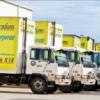
Melbourne Office Relocations
Managing Your Companies Melbourne Office Relocation
Start with an Office Moving Checklis
Checklist to consider once a new property is secured:
Office Relocation – Time Line
Six to Nine Months To Go:
Depending on the size of the office relocation, consider establishing an internal “relocation team”. Brief the relocation team on your expectations. Different staff may be able to assist, such as your IT department may help with the telephones, computers, electrical work or help prepare the quotes for you to consider.
Select an employee to serve as the “move manager” during the relocation effort, managing the removal process with the “relocation team.”
Look at your infrastructure and telecommunications needs and this is the perfect time to consider upgrades for copiers, phone systems and other office equipment.
Re-evaluate the furniture and workstation needs of the office. If you have a large number of staff to relocate, consider using an office planner. Your office planner can assist you in determining needs at your new location, as well as introduce furniture vendors for new purchases. Maybe your new premises already have workstations and bookcases allowing you to sell off the existing office furniture?
Identify furniture and office equipment that will be sold, tipped or donated. Begin to identify companies that can accommodate for surplus items that will not be relocated or perhaps consider offering some furniture to existing employees.
Four Months To Go:
Have an updated briefing with your “move manager” and “relocation team”.
Consider any purchase orders for paint and carpet, new equipment, as well as furniture, may necessitate lead times of up to eight weeks for delivery.
Start to clear the office of non-essential furniture, unused storage records, files and misc office clutter.
Contact all suppliers, clients and partners that need to be informed of the office relocation.
Confirm the number of employees that need to be relocated.
Start compiling a seating chart for your new office space and have this completed finished 30 days prior to the move date. If possible collect the plan from the new premises (to scale would be perfect) and draw the position of each staff member, remembering to work the equipment (example: standalone photocopier) into the puzzle too.
Finding a Professional Office Mover
Your checklist will conclude with the hiring of a professional mover. Finding a reliable mover can be arduous. If you scroll the internet, there are many thousands claiming to move offices so please rely on professional references and ensure that they are part of AFRA (Australian Furniture Removal Association). On larger office relocations, be sure they are willing to provide you with an in-person survey of the items to be moved, a comprehensive written estimate, and an in depth pre-move meeting with your move manager.
Liability during the move
All AFRA members must have public liability (up to 20 million) which covers damages to buildings and common areas which will be part of the quote
These members typically can also offer accident damage insurance whilst loading/ unloading and in transit. This is charged based on the value and the items that you wish to cover. More information can be found on Insurance Details.
Final Preparation
Get in touch with vendors from whom you lease equipment. They may require that they move any leased equipment such as copiers and internet servers. If you have the moving company move the equipment, you may unexpectedly void your warranty and/or service agreements.
Verify with Building Managers the “Moving Rules and Regulations” for their building(s). Most building managers require advance elevator and loading dock reservations before you exit or enter a building.
After the Move
Your first day in your new office can be full of turmoil. Here are some suggestions for making it a little easier:
The last item on your checklist is often “unpacking.” If the office mover isn’t going to provide the unpacking, your employees will have to the job. Be sure to set aside enough time. Depending on the volume of contents, it may take longer to unpack then it did to pack. Ensure that the office movers place all items where they are meant to be including separating the boxes and/or office crates and placing them near the designated workstations or shelves.
Don’t let empty cartons pile up in hallways and cubicles. Employees should deposit packing materials a predetermined waste area.
Schedule the office mover to take all of the empty packing materials out of your new office.
Conclusion
As with any task or project, the success of your relocation is in the details. Don’t take the process of moving your company lightly. Getting your employees back to work Monday or the next available morning without downtime requires preparation and attention to detail.
I wish you have a safe and hassle free office relocation.
John Christoforidis
Transcorp Removals & Storage
1300 466 838 – Moving Offices since 1987.
AFRA and TOLL Accredited Removalists
